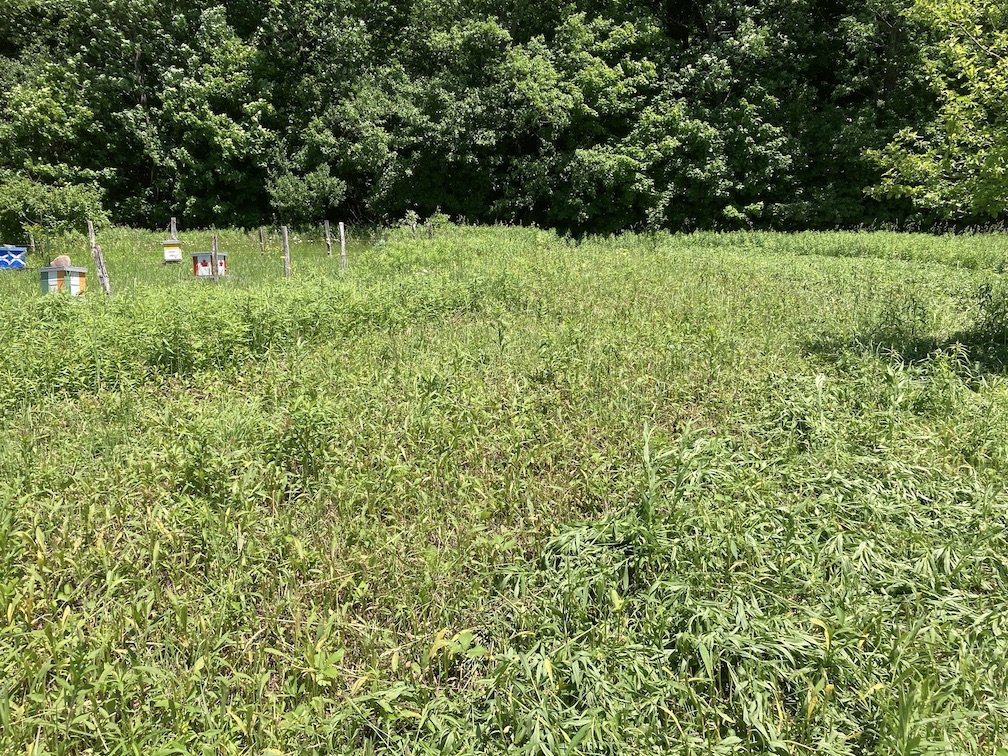In the fall of 2021 I experienced my worst robbing year ever. The goldenrod and knotweed came and went, the bees packed in the honey, the asters made their feeble debut. Normally cold temperatures quickly follow, a cue that keeps the bees tucked in tight and minding their own business.
Recently (and by that I mean the last two or three years), those feeble asters signal something else; a fall dearth with no brood and warm weather. With no brood to tend, and temperatures good for flying, all that’s left is foraging — right in each others’ hives. Feeding sugar syrup didn’t really help. Who’d want sugar water when there’s all this delicious honey to be had for the taking?
To address this, I’m testing some goldenrod management. If mowed, goldenrod will regrow and blossom, but out of step with the natural crop. Thus begins my experiment:



I’ll do one more cut next week. If this works, this first cut will bloom after the natural goldenrod dies off, the second a week later, and then the third. I’ll track which cut gives the most growth and flowers, if I cut too early or too late, and search for a sweet spot to prolong my goldenrod bloom.
The other step I’ll try is to seed some Canada goldenrod, a variety that blooms later than the tall goldenrod common to my field.
The real metric will be: does this affect the robbing frenzy?
Not all goldenrod produces nectar for bees. If you’re interested in identifying goldenrod species in your forage area try this field guide (pdf)
